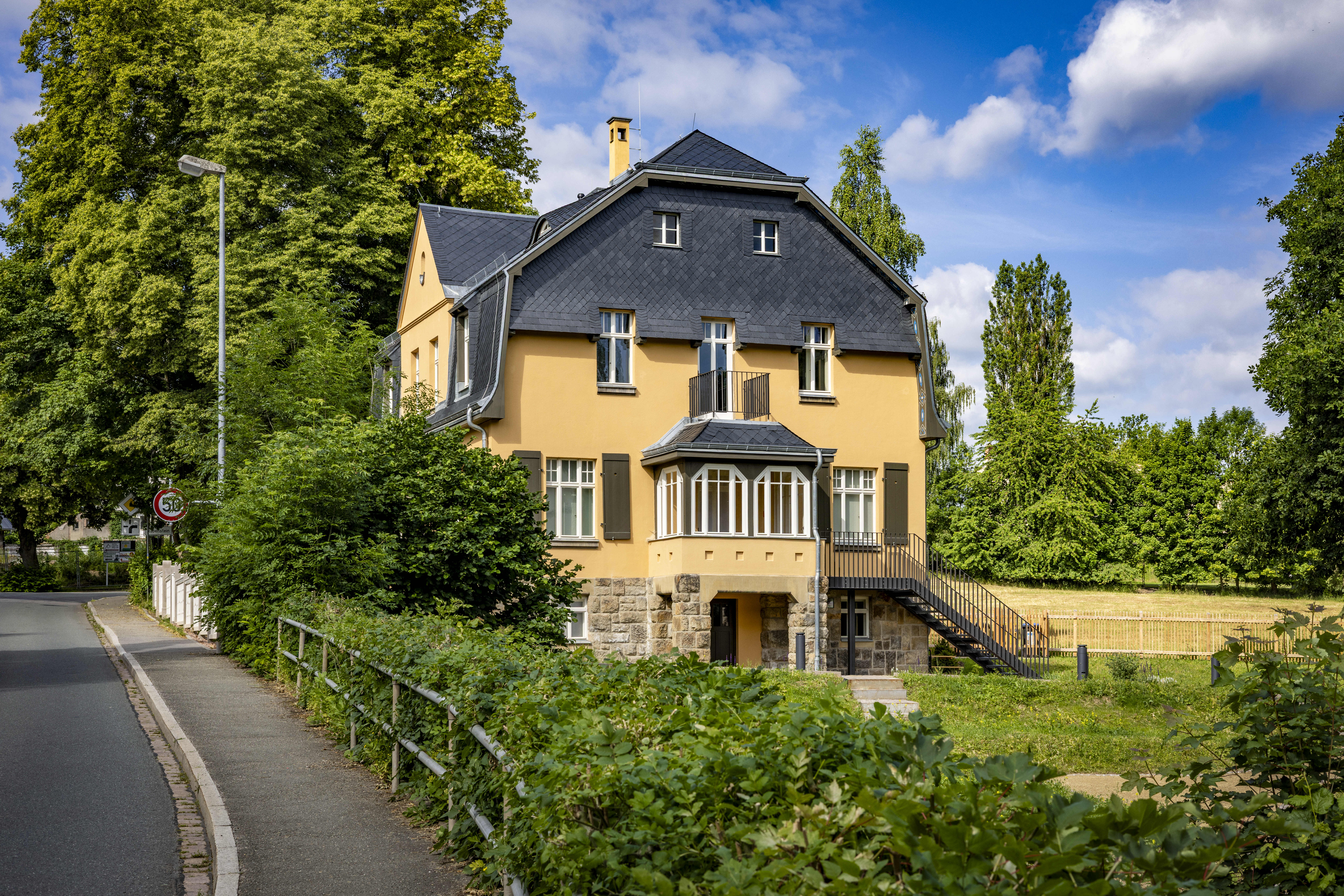The Karl Schmidt-Rottluff Haus in Chemnitz, formerly the childhood home of the Rottluff-born artist and co-founder of the "Brücke" artists' group, was opened as a museum during the Capital of Culture year. This was preceded by extensive refurbishment, as the house had previously stood empty for years. As a so-called "intervention space", the renovation represents a sustainable contribution to Chemnitz as a cultural centre. In the following interview, Florence Thurmes, General Director of the Chemnitz Art Collections, provides insights into this new cultural hotspot and the Expressionist Festival, which will be celebrated on the site on 24 August.
Karl Schmidt-Rottluff is considered one of the city's most famous sons. What role did Chemnitz play in his work and what role does his work play for Chemnitz today?
Karl Schmidt was born in Rottluff in 1884 and went to school in Chemnitz. From the age of 15, he received his first impulses for his artistic work through regular visits to exhibitions organised by the "Kunsthütte" association, the forerunner of the later Chemnitz Art Collections. He exhibited his first landscape watercolours here in 1904. He grew up at a time characterised by progressive industrialisation, urban densification, mass production and the accompanying devaluation of agriculture. Not only Karl Schmidt-Rottluff was influenced by Chemnitz, artists such as Erich Heckel and Ernst Ludwig Kirchner also spent their youth in the city, which at the time exported textiles worldwide and was one of the richest cities in the Wilhelmine Empire. in 1901, Schmidt-Rottluff and Heckel and other art-loving students debated the works of Søren Kierkegaard, Friedrich Nietzsche and August Strindberg in the "Vulkan" student club. Such writings, as well as the industrialised cityscape, had a great influence on the later visual language of the Brücke artists.
